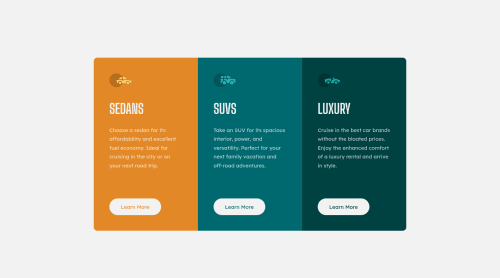Submitted about 3 years agoA solution to the 3-column preview card component challenge
3-column-card BEM
@LorenaFrias

Solution retrospective
This was more challenging than I thought it would be. I don't fully understand grid yet. Working on it. I always end up feeling my code could've been cleaner. Also, first attempt to implement BEM. I haven't grasped it yet. :) Feel free to comment!
Code
Loading...
Please log in to post a comment
Log in with GitHubCommunity feedback
No feedback yet. Be the first to give feedback on LorenaFrias's solution.
Join our Discord community
Join thousands of Frontend Mentor community members taking the challenges, sharing resources, helping each other, and chatting about all things front-end!
Join our Discord